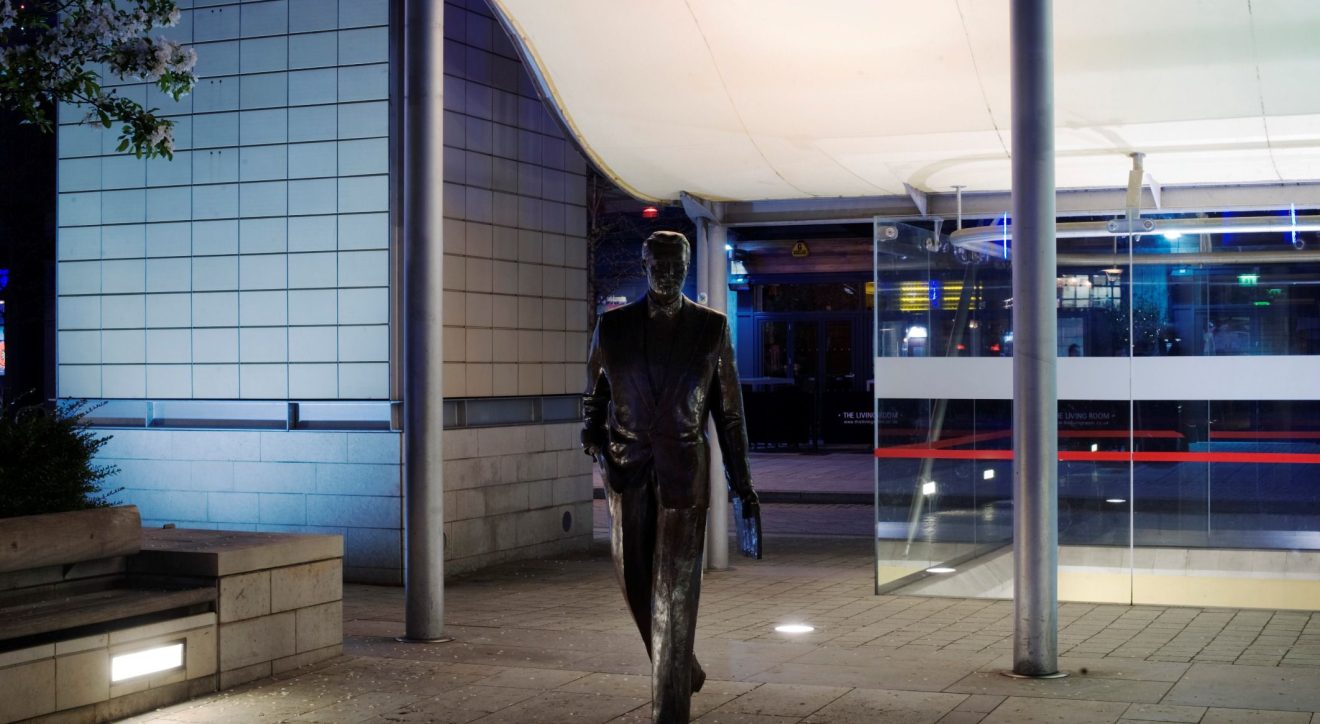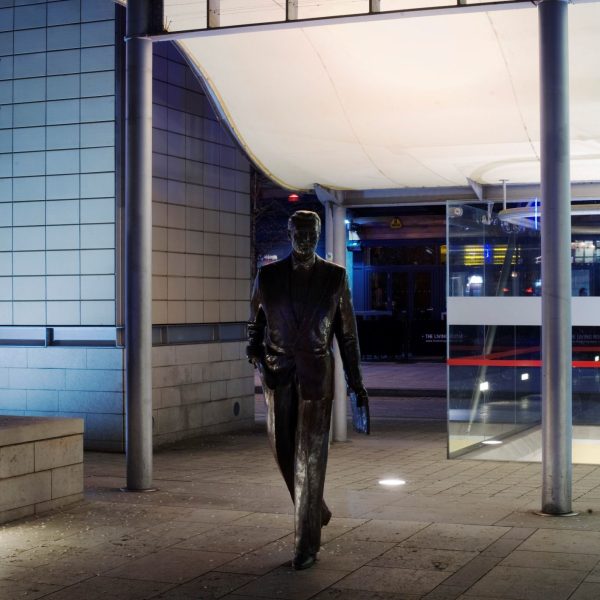
Synopsis
At-Bristol is an 11 acre educational visitor attraction which opened in July 2000 as part of a £450 million urban rejuvenation scheme. Located in Bristol’s Harbourside the regeneration project was made possible through substantial grant funding from the National Lottery via the Millennium Commission. It includes the one of the largest public art commissions programmes in the South West region with works by eight artists including Graham Ibbeson’s ‘Cary Grant’.
Description
This life-size bronze of Hollywood legend Cary Grant commemorates the achievements of the actor who was born and brought up in Bristol. Cary, who was a regular visitor to the city until his death in 1986, enjoyed one of the most successful and long lasting acting careers. He is arguably the greatest British born film actor, being voted the second greatest film actor of all time.
The statue was unveiled on 7 December 2001 by his widow Barbara Jaynes, marking the 70th anniversary of his arrival in Hollywood, after a run on Broadway in an English acrobatic troupe.
Sculptor Graham Ibbeson has worked as a professional sculptor since 1978, creating bronze sculptures across the UK.
The At Bristol Commissions Programme
The commissioning programme started in 1998/99, at the same time as the designs for the site were being developed. The commissions are all themed around the concepts of reflection and exploration. They include small-scale painted bronze sculptures Jasmine, and Bill and Bob by Cathie Pilkington, a large-scale bronze sculpture, Beetle by Nicola Hicks, and figurative bronzes of William Penn, William Tyndale and Thomas Chatterton by Lawrence Holofcener. Works using light include Zenith by David Ward which covers Millennium Square, and a text based work using neon light by Tim Noble and Sue Webster in the underground car park. William Pye’s large landscape piece using water, Aquarena, animates Millennium Square, while Simon Thomas’ sculpture Small Worlds, celebrating prize-winning physicist Paul Dirac, is in Anchor Place. An interactive digital work, Elematrix, by Tessa Eliot is inside the At-Bristol complex. With the exception of the two large works which are integral to Millennium Square, most of the works were made off-site and installed from 1999 and throughout 2000.
Three architects were involved in transforming the At-Bristol site with new buildings and landscaped open spaces which would complement the existing architectural heritage. Wildwalk and the Imax cinema were designed by Michael Hopkins and Partners, and Chris Wilkinson Architects (now Wilkinson Eyre) designed the building for Explore. The open spaces and squares were carefully planned by The Concept Planning Group (CPG) to accommodate the artists’ commissions and to provide areas suitable for live entertainment, such as street performers. CPG was also responsible for overseeing the installation of the commissioned artworks and the subsequent period of snagging and problem resolution.
The works have evoked a strong sense of ownership from local people and an emphatically positive reaction from visiting children and adults.
Individual Commissions
Millennium Square’s six unique, epic scale water sculptures which can also be drained to create a distinctive performance space.
Inspired by the Rhinoceros Beetle, an awesome presence: one of the world’s strongest creatures which can support up to 850 times its own weight on its back.
Bill and Bob by Cathie Pilkington
A life size tromp loil tableaux comprising of painted bronze jack russells, Bill and Bob, who swim in a puddle of rubber
A life-size bronze of Hollywood legend Cary Grant commemorates the achievements of the actor, who was born and bred in Bristol.
A dramatic 18ft cone expressing colour, light and heat. Commemorating Nobel Prize-winning scientist/mathematician, Paul Dirac.
William Penn, William Tyndale and Thomas Chatterton by Lawrence Holofcener
Spanning three centuries, Penn, Tyndale and Chatterton were all communicators who left a lasting legacy. Interact with them and temporarily distract them from their work.
A dramatic integrated light piece comprising 52 runway lights. Inspired by an analemma, the line traced by the sun recorded at noon over the course of a year, as used in the past by navigators, explorers and astronomers.
For further information on the At Bristol public art comissions see the At Bristol website or the related links on this page.


